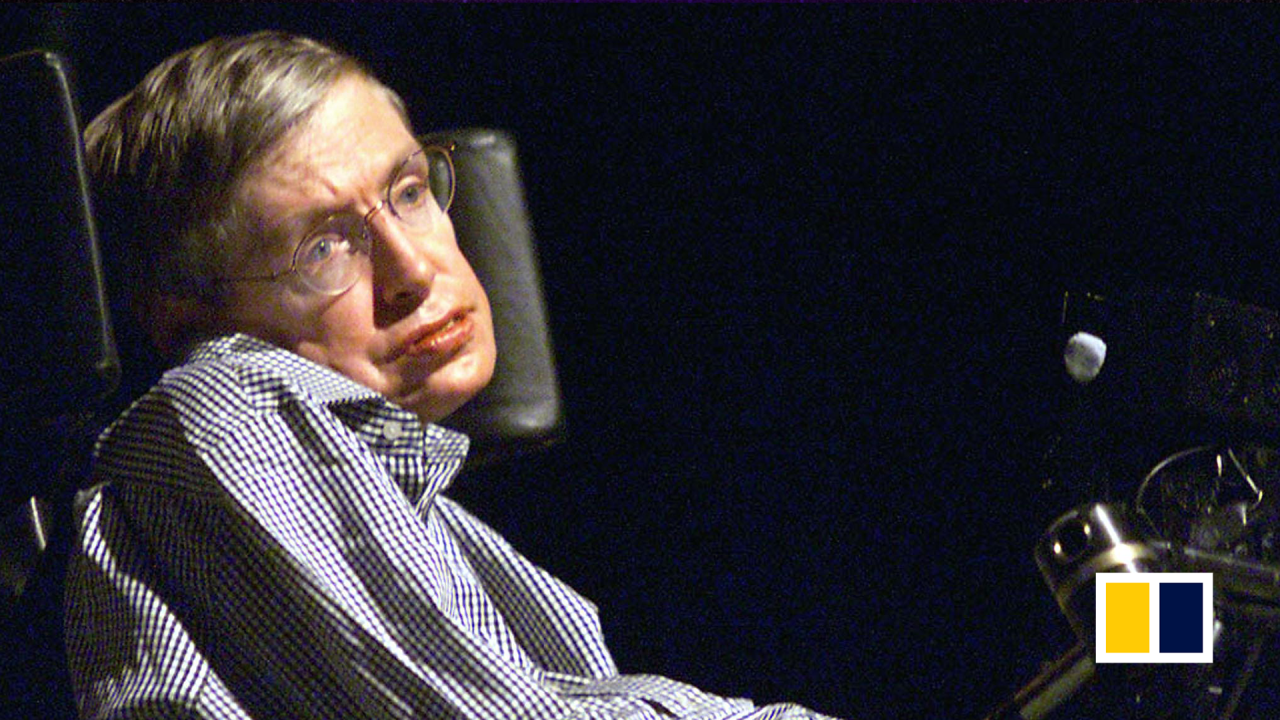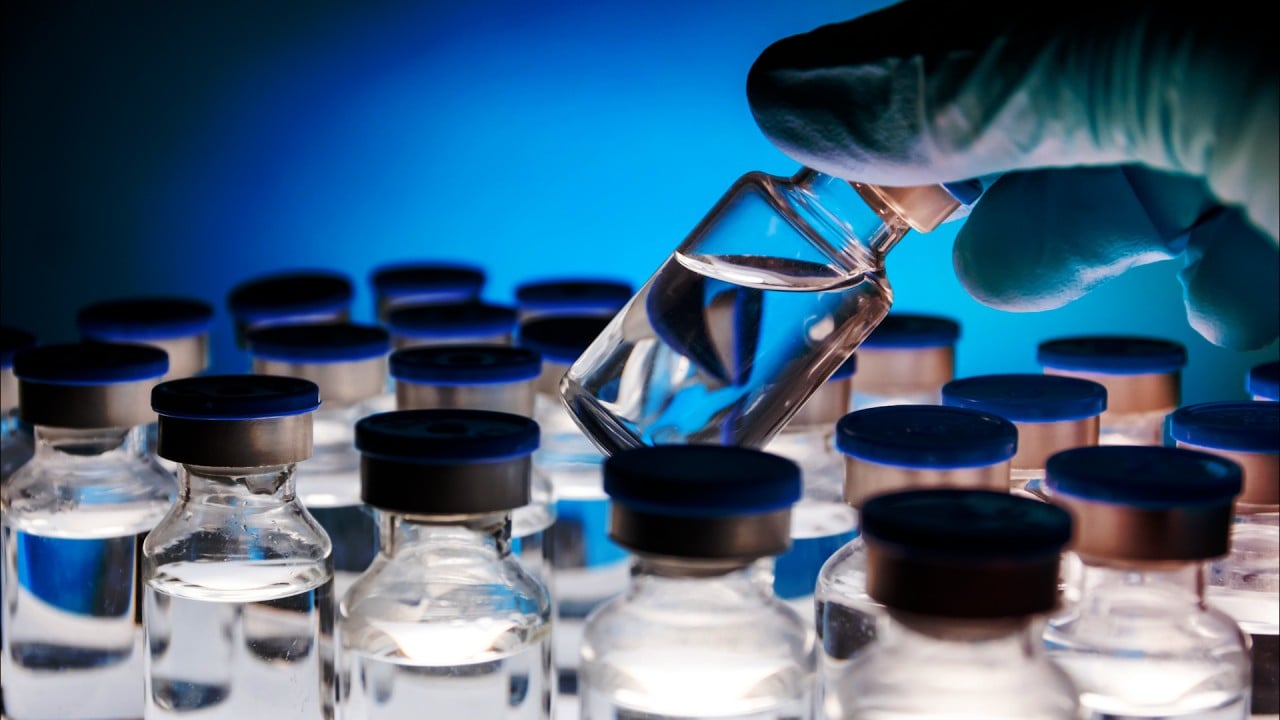Fan Dongsheng, a professor in the department of neurology at Peking University Third Hospital, who is overseeing the patient’s treatment, said that after taking the drug, his condition reached a “turning point”, with the progression of the disease slowing until it was “basically at a plateau stage”.
What was even more unexpected was a measurable physiological change: the patient’s lower limbs began to respond to electrical stimulation, indicating an improvement.
When a nerve is severely damaged, it usually does not respond to an electrical stimulus. But after three months of treatment, doctors saw small fluctuations.
Huang Xusheng, a professor at the neurology department of the First Medical Centre of China’s PLA General Hospital, said it was all “very encouraging”.
While there are several drugs available worldwide to treat ALS, he said they cannot reverse the damage but only slow its progression. This drug candidate, on the other hand, appears to be more effective in actually improving clinical symptoms, although he stressed that “a longer period of observation and more cases are needed to confirm this. ”
They then develop symptoms such as muscle atrophy, uncoordinated limbs, difficulty in eating and speaking, and deteriorating respiratory function, with the disease eventually leading to death, mainly from complications or respiratory failure.
However, according to a 2016 report by the US National Institutes of Health (NIH), it is estimated that the number of ALS cases across the globe will increase from 222,801 in 2015 to 376,674 in 2040.
Hong Kong patient group launches city’s first registry for people with ALS
Hong Kong patient group launches city’s first registry for people with ALS
“Ageing populations, particularly in developing countries, are the primary driver of this significant increase,” the report said.
The US Food and Drug Administration (FDA) has approved four drugs for the treatment of ALS over the past 30 years, but they only help to slow the progression of the disease and prolong the survival time of patients.
It was in May 2023, when Fan had a patient whose condition was rapidly deteriorating, that he gave the patient a candidate therapy that had been studied in the lab for nearly 10 years but had not yet entered clinical trials.
“For a patient with a serious or imminently life-threatening disease or condition, if there is no comparable or satisfactory alternative therapy, an investigational medical product, albeit unapproved, is allowed to be used if it is beneficial for the patient with his or her full consent,” he said, explaining it is called “compassionate use”.
The investigational drug is also a gene therapy, named “SNUG01”. It was mainly discovered by scientist Jia Yichang at Tsinghua University, but the team has not revealed much about its specific target and working mechanism.
The most recent genetic therapy approved by the FDA in 2023, Tofersen, targets a gene mutation that is carried by only 2 per cent of all ALS patients, meaning that it is only effective in a very small percentage of people.
Hong Kong experts find mechanism that can help develop ALS treatments
Hong Kong experts find mechanism that can help develop ALS treatments
But this candidate drug has the potential to benefit a wider number of patients, according to Fan, who added that it has also shown good safety and efficacy in many animal models.
Adding to Fan’s excitement is the fact that the improvement seen in his patient is unlikely to be caused by the “placebo effect” where a person feels better after a treatment due to psychologically reasons.
“The placebo effect usually lasts about two months,” Fan said. In this case, however, they found that the patient’s condition was still under control after six months of treatment, so he is confident any placebo effect could be ruled out.
To accelerate the drug’s progress to market, Jia, the lead scientist behind the drug, co-founded a biotech company in 2021.
In preparation for an application for a clinical trial, the drug has been in a small study since September last year, a phase called an “investigator-initiated study”, which will involve six patients. Three patients have already been enrolled, Fan said, and preliminary observations suggest that the drug is safe, but it is too early to assess its efficacy.
As part of China’s efforts to become self-sufficient in biotechnology and encourage the development of home-grown innovative medical products, “the Chinese authorities have attached importance to the development of this drug and provided some support,” Fan said.
On the other hand, he said, some new drugs approved overseas tend to be very expensive – far beyond the reach of many Chinese patients. Tofersen, for example, developed by US company Biogen in collaboration with Ionis Pharmaceuticals, costs about 1.5 million yuan (US$210,000) a year.
Fan said that if SNUG01 really enters the market one day, he expected it would be more affordable, especially domestically.
But he warned against being too optimistic just yet.
“As researchers, we must remain calm and cautious. We have only observed one case for six months, which is far from enough,” he said.
Indeed, just like the global search for Alzheimer’s treatments, which has been a long journey full of failures, drug development for neurological disorders has always been very challenging.
Between April 2020 and April 2022, a total of 11 drugs to treat ALS were announced to have suffered setbacks in research and development, with nine of them falling due to lack of efficacy.




